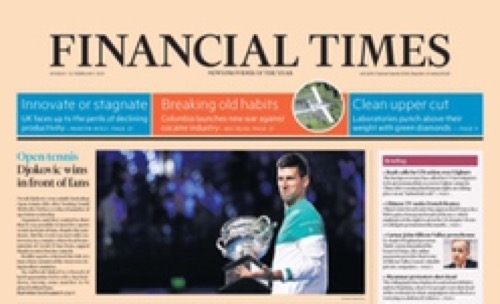
The Financial Times (a British newspaper) has a rare profile of Fidelity Investments (paywall, archive) with the title “Can Fidelity keep its grip on America’s investments?”. Fidelity is privately-held (49% by the founding Johnson family now in its third generation, 51% by employees) and they don’t seek the limelight. They didn’t grant an interview for this article, and they seem to only disclose the absolute minimum financial information about their company as required by law. I can respect that, but at the same time, I like to better understand the custodian of a big share of my net worth, so I read the article with interest. Here are my takeaways.
Fidelity’s longevity is at least partially due to its willingness to pivot with the times. They were once best known for their actively-managed mutual funds like Magellan, then became a 401(k) behemoth managing trillions, accepted low-cost passive investing options, and even today are more open to crypto than other big companies (a Fidelity stablecoin is coming). They don’t move crazy fast, but they do move thoughtfully.
They are willing to be different things to different people. They have some of the largest companies in the world as their customer through 401(k) plans, they are the home to very power financial advisors and their billionaire clients, and they also count tiny individuals like myself as clients who trade less than 10 times a year and only mostly low-cost (non-Fidelity) ETFs. They’ve somehow figured out how to balance all these activities and profit from them all:
Astute fee management has also played a part. “Fidelity is a full-fee, full-cost player, not a discounter like Vanguard,” the former employee says. “Abby [Johnson] has masterfully priced her services across asset classes, products and channels.”
Fidelity’s mutual fund fees are competitive. According to Morningstar Direct, the average asset-weighted cost of an active equity fund in the US is 0.59 per cent a year, compared with Fidelity’s 0.43 per cent. Among passive products the average is 0.10 per cent and Fidelity’s is 0.03 per cent.
Fidelity is able to take a longer-term view.
Even in the face of such challenges, its advocates say Fidelity has another important string to its bow. As a private, family-controlled company — Edward and Ned each ran it for over three decades — it is not subject to the demands of quarterly reporting and managing shareholder expectations, helping management to focus on longer-term strategy and innovation.
“I would say this is the secret sauce of the Johnson family,” the former employee says. “They think about 25-year periods. I’m sure [Abby’s] father was petrified about: how do I keep this thing going so that my daughter can take over?”
“As they prepare for the generation coming up behind Abby, they will be thinking about where the next 50mn [customers] are going to come from.
Overall, Fidelity has the vibe of the sober adult in the room. Not the crypto teenager that can take huge risks since they have nothing to lose. Not the young adult Robinhood trying to break things first and ask for forgiveness later. However, they are also not the old man who complains about everything new and refuses to change their habits out of stubbornness. Based on the new stuff I learned in this article, I still see Fidelity as a good long-term home for my investments.













 Bengali (Bangladesh) ·
Bengali (Bangladesh) ·  English (United States) ·
English (United States) ·